The Day I Ate A Deadly Plant: The Spectrum of Edibility
“If all wild plants and fungi were edible, we wouldn’t be foraging – we’d be grazing.
And the world would be a very different place…”
I said this on my guided walk this weekend, shortly before nibbling some very poisonous yew needles.
Perhaps I should explain…
I had yew in one hand, spruce in the other, and 15 very excited chinese ladies chattering 10 to the dozen. As I finished our discussion about the uses (and dangers) of conifers, I strode onwards and took a refreshing, lemony nibble of the tender needles in my right hand. The spruce tasted rather more bitter than usual. Oops. That would be the yew then.
In 25 years of foraging, this was the first time I have ever eaten something seriously poisonous. I decided not to mention it to my group of novice foragers. They were excited enough.
I wasn’t particularly worried…contrary to common belief, there aren’t that many things out there that will kill you from just a nibble. But I did feel a frisson of danger, a heightened alertness to my physiology. A gentle nag of paranoia. And some excitement at being able to record the effects of eating one of the UK’s truly poisonous plants.
I enjoyed a large meal in a nice restaurant with several glasses of wine and whisky afterwards without thinking about it once. But on the drive home, I thought it only reasonable to explain to my wife that should I lapse into a coma during the night, probably best to notify the hospital that I had ingested taxine, a few grams of which can kill a horse.
I’m delighted to say that i’m not writing this from the grave. But I’m perversely disappointed that I can’t report any ill effects at all from my wee lapse of concentration. I may never get the chance for this sort of research again.
But it did get me to thinking about about the whole notion of toxicity and poisoning.
The main reason people come on my guided forays is because they want to enjoy the wonderful flavours and connection with nature that foraging brings, but are scared of poisoning themselves. I feel something is missing from a walk if we don’t encounter something deadly, and often route a walk to maximise meetings with poisonous species. Cynically, I could say poisonous plants and fungi keep me in business. But truthfully, I love these potential killers at least as much as their edible neighbours. I hear people describe them as “evil”, but personally I have nothing but respect and admiration for them, having cleverly – or by a chance of genetics – evolved themselves off the menu. This sometimes backfires when people feel the need to exterminate them, just in case they should rise up and throw themselves down their throats. Many are exceptionally beautiful – wolfsbane, destroying angel and foxglove spring to mind – and all have an important role to play in the ecosystem. To define a plant or mushroom as good or evil according to its usefulness to man is surely the ultimate in human arrogance?
But what is poison? When does something cease to be edible and become poisonous. Can we measure that point? And if we can, do we actually stop consuming things at that point?
Take a look at this layout board from one of my fungi foraging days last year:
Note the labels across the top from “Toxic” on the left, through “Inedible”, “Edible” and “Tasty”, and that I have vaguely arranged our finds into those categories. Also, please be aware that this board could just as easily have been populated by plants. Its a common misconception that there are more deadly mushrooms than plants. Mushrooms are generally just harder for the untrained eye to tell apart – the fine distinctions between “delicious” and “deadly” make people paranoid.
That the “Tasty” and “Edible” sections occupy two thirds of the fungi layout board is somewhat deceptive as we were mostly focussing on edible and poisonous species and didn’t pick a lot of species we identified (or failed to identify) that would have fallen into “Inedible” – if we had, “Inedible” alone would have taken up at least three quarters of the board.
If i’d had space, I would have added more headings – for example:
- Tasty – may cause adverse reactions in some people (eg. wood blewits)
- Edible – needs careful preparation (notably fly agaric – see here for more information and some further in-depth discussions on the spectrum of edibility)
- Edible – may react with alcohol (eg. Common inkcap)
- Edible – in small quantities (eg. Wood sorrel)
- Edible – at certain stages of growth (eg. Lesser Celandine)
- Edible – must be cooked (eg. Blusher – in fact I recommend beginners cook all wild mushrooms they plan to eat)
- Inedible – medicinal uses (eg. Turkeytail)
- Inedible – Survival uses (eg. Birch polypore)
- Toxic – Deadly (eg. Hemlock water dropwort, death cap, funeral bell)
…I could go on. But I hope you see just how complex the world of “Edibility” is – a million miles from the black and white “Deadly/Edible” notion of wild fungi that many people carry in their heads.
Here are some more stats and insights around poisonous mushrooms that I shared on my social media:
View this post on Instagram
Putting truly poisonous mushrooms aside for a moment, what I find particularly interesting, is that people seem to measure wild food by different standards than they measure shop-bought food.
As a wee exercise, here is a list of other potential foodstuffs. Have a look at the picture and think where you would lay these on the spectrum of edibility:
- Vodka
- Potatoes
- Peanuts
- Cashew nuts
- Butter
- Supermarket ready meals
Presumably most of these would fall into at least the “edible” and hopefully the “tasty” section. Yet the alcohol in vodka, in sufficient dosage, can be poisonous (a hangover is nothing but “alcohol poisoning”) – and alcohol certainly kills more people than any other foodstuff.
Potatoes are part of the Solinacea family – which includes deadly nightshade. Raw potatoes certainly aren’t good for us and when they turn green they are actively toxic.
Peanuts are widely eaten, but a small proportion of people suffer a life-threatening adverse reaction to them.
Cashew nuts are edible when shelled and thoroughly cooked, but contain high levels of urushiol raw – a virulent toxin.
Butter. Mmmmmm. Butter. Delicious, but not good for our long-term health in large quantities. Who wants to live forever..?
As for stupor-market ready meals…well, for a start, does anyone really know what goes into them? Those that eat them place their trust in faceless producers, brands designed not by nutritionists, but by profit-hungry corporations at the end of a very long supply chain. Yes, there are public health officials, supposedly checking all this for us, but they can’t tell horse meat from beef.
Imagine if you could magically transform the exact constituent of a ready meal (or anything else on the list), into the form of a wild mushroom. I’m going to bet that most things on this list would be classed as at least inedible, possibly toxic.
I’m not saying we shouldn’t eat them (well, except stupormarket ready meals, that’s just insane), only that we judge wild foods by different standards to those that are grown, processed, packaged and marketed for us. I’m saying that we’ve been conditioned to trust a faceless corporation more than our own senses.
Foraging is hugely empowering and rewarding. Making close decisions about what you harvest, when and from where, based upon your own learning and observations, makes for an intimacy with your food that simply isn’t possible with anything bought from a shop. The journey towards becoming a fully rounded forager is about learning not just about our quarry, but about ourselves – our personal preferences, tolerances, and what makes us shine.
This journey is entirely safe – way safer than placing our trust in those that seek only to profit from us – provided we stick to the one cardinal rule:
“Never eat anything unless you are 100% certain you have correctly identified it, and you know that it is safe to eat – for you”
Would that people applied the same rule to what they buy.
Related articles:
- Poisonous species
- Know your carrots
- Mushrooms and Toadstools: What’s the difference?
- Fly agaric – cultural perspectives on edibility
Recent posts:
- Foraging, Sustainability and the Media
- Sea Aster – dishevelled star of the salt marsh
- How to ferment wild greens
If you’d like to learn more about how to safely, mindfully forage, why not check out my Wild Food Guide, book on one of my foraging walks or book some private tuition.
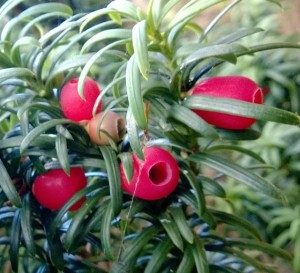


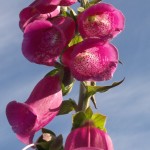

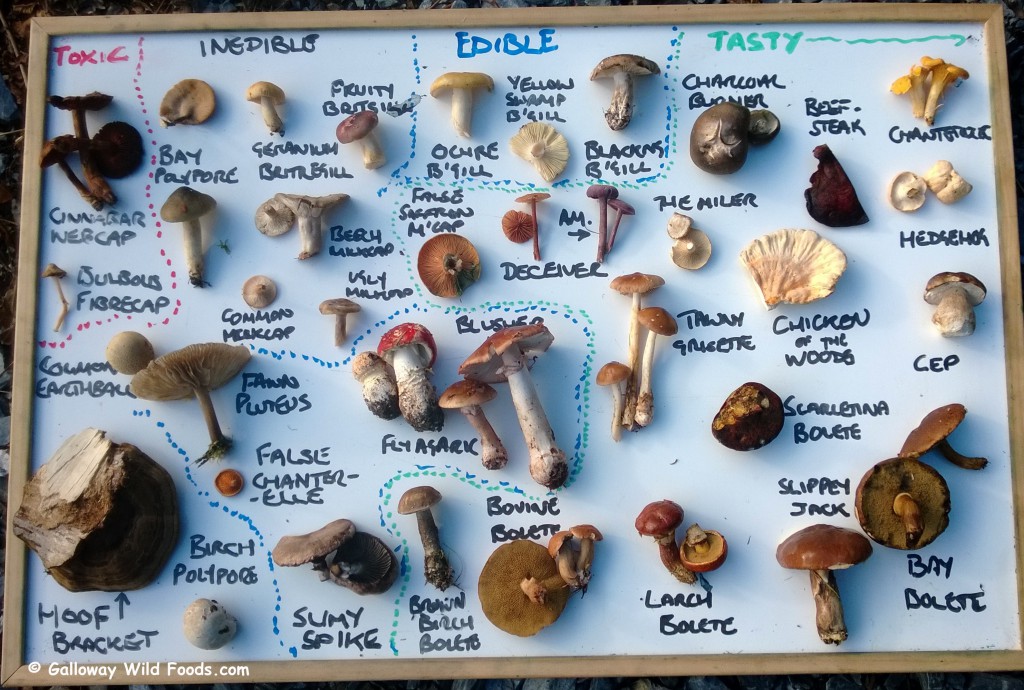
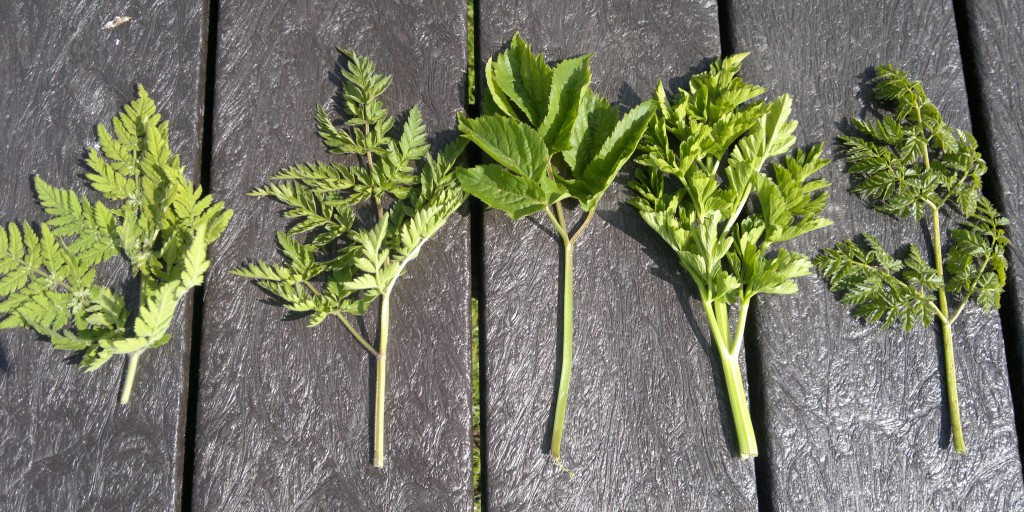
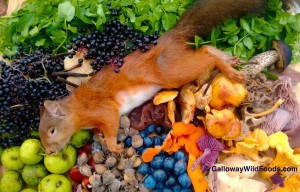
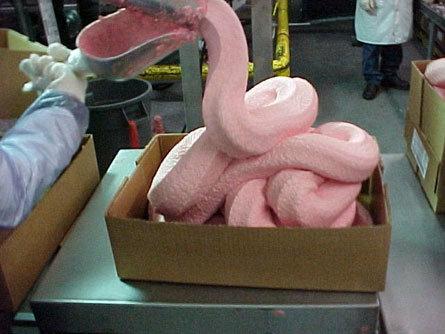
35 Comments
Hi Mark. Nice to know that ‘yew’ are still in the realm of the mortals! Fantastic blog! Love the content and love the sway into ‘everyday’ accessible foods found in the shops, some of which as you say can be deadly to some and with no doubt, dubious of quality. Look forward to hopefully seeing you again later in the year! In the meantime, take care and stay focused! Craig :0)
Hi Craig, Yeah, looking forward to exploring “the spectrum” with you in autumn!
Hi there I have become extremely interested in forgaging after a rather strange encouter with a man who knew a great deal about plants and a long discussion about Socrates and Hemlock. I know a fair bit I gather about biology and would love to joining such a forrage in the Autumn. I a shy person and you seem very ammenable although my focus is entirely on the learning. Thank you – Catherine.
Hi Mark ,We made some furniture from Yew a few years ago and after planing and sanding Ian was not well ,it was not clear but we have always blamed the fine inhaled Yew dust .
Hi Kenny, That’s interesting. I read that its pretty toxic in all its forms, so sounds likely. Even recommended not to harvest fungi (esp. chicken of the woods) from it, though I did meet a couple who had eaten COTW from a yew for many years with no ill effects. Even old, dried branches seem to still be seriously toxic. What were Ian’s symptoms?
Mark.
Its strange you say this because I ate three berrys as a child and my Nanny did nothing about it but ”hope for the best” I however do not recommend of course! If not too graphic – what were your symptoms. Many poisons one can develop and immunity to – we know this of alcohol! Thank you if you can reply as I am absolutely facinated by the Forrest after being trapped in the worst of suburban concrete jungles for two years. Catherine.
My understanding is that the red part of the berries is edible?
yes – I mention this in the caption of the first photo
Love this post and discussed it on my own mushroom blog. Right now there is a lot of back-and-forth int he mushrooming community about whether Amanita muscaria should be eaten after boiling, and I appreciate your perspective.
http://arizona-mushrooms.org/2014/06/08/day-i-ate-a-deadly-plant/
Hi Chris, Its an interesting one – did you see my page on A. muscaria – some interesting comments there. All about taking personal responsibility… Personally I find the “No Eat” campaign comes over as a bit zealous/precious for my taste (excuse the pun!)
Great site you have there, happy foraging! Mark
I adore this post! I have been poisoned by mushrooms, but I believe that experience– while intense and long-lasting– has only encouraged my passion for foraging and educating myself about wild plants. I love what you do and I heartily endorse this take on the risk of poisonous plants and fungi. They lie on a spectrum, and we must proceed with curiosity and respect rather than fear if we want to learn. Thanks for this great read!
Hi Kelly – I met a man who had picked an eaten mushrooms in his senile years and he described having what sounded like a ”trip” yet obviously he was very afraid – He said someone phoned 999 and he was rushed to hospital experiencing changing colours to everything – red – yellow – blue and when he started to see blue more often he really panicked. It makes me chuckle thankfully of course he was fine – however it really increased his interest in all things nature related. He looks back on the experience much like Mark here with a stoic and well meaning sense of humour. Please forgive my English as I am learning.
Hi Mark
I have just found a cluster of The Prince and was very excited and then realised they were growing under Yew…. should I leave well alone?
Tina
Hi Tina,
I mostly warn against eating fungi growing directly from yew. Having said that, I have now met 3 different people who have happily eaten chicken of the woods growing from yew for several years in succession with no ill effects. The Prince is saprotrophic and may be consuming the dead yew needles, but not necessarily.
That’s all the info I have – the decision is yours from here!
Happy foraging,
Mark.
Hello Mark.
Butter unhealthy? Where in the world did you get that from? The saturated fats scare?
I’ve done a lot of researching on that topic, as I live a life of LCHF (Low Carbohydrates, High Fats).
Apart from shedding about 80 pounds over the last two-and-a-half years, I have also felt a great invigorating effect.
But scientifically, it seems that if you eat carbs alone or fats alone, none of them have any detrimental effect as such, but together, they make an unholy alliance; the carbs being digested preferentially, while unlocking all of our fat cells for storage.
This is a whole new world of nutritional knowledge, debate and controversy, but I just didn’t like to see the healthy grass-fed butter denigrated as a killer on par with alcohol.
Cheers.
Tom
Pretty much everything comes down to dosage, IMO.
Yes its not the poison – its the dose. (A well known saying)
Loved through article. Just found your site. Which wad pleased about. Kept coming up with the same standard outdoor foraging sites. Loads more to read here.
Great site, really enjoy reading your posts!!! Keep up the good work! I wonder, have you ever considered doing a piece on lookalikes around the coast? From foraging the last few years I find many plants similar looking to say sea aster, but not it. Maybe it would be good for people trying to educate themselves to know what these plants actually are too! Also I don’t know what it’s like in Scotland but here in Northern Ireland we are way behind this year due to the bad weather over the last lot of months. The sea sandwort this time last year was already starting to form a carpet, as of yesterday I had to go poking about for stray buds!! Crazy! All the best, Cara
Hi Cara,
I consider dozens of new pieces a week, but its hard to find the time to actually write them. Sea lavender is the most likely lookalike for sea aster, and I mention that in my post on it. I try to cover relevant lookalikes as I cover the edible species. Haven’t broken this down into habitats yet…
Yes, about a month behind here, just across the water in Galloway too. But catching up very fast now. 🙂
Mark.
I always thought that all parts of Yew were poisonous and was surprised when in NE India the locals proudly showed me a rare tree in their wood from which they ate the red berries. It was yew an escape from local European gardens. They taste nice, I don’t eat many but some each year.
My grandfather (somewhat bizarrely imho) taught me to eat yew berries as a child, always spitting out the seed. It was only as an adult that i realised Yew was poisonous. Apparently berry flesh is mildly poisonous… i never had any problems, but I didn’t eat bowlful of them!
Thanks Tania. Do you have a source for the berry flesh being mildly poisonous, please? Mark
Hi Mark,
Fantastic read! Had me giggling and smiling and nodding enthusiastically along. You are a true inspiration!
If I didn’t live at the opposite end of the country I would definitely be attending one of your courses. One day, hopefully. I’ve always wanted to visit Scotland.
Liza
My old mushroom guide often classed species as “Worthless — non-poisonous”.
I’d agree with most here, but: Only checking for symptoms seems very misguided. Many poisons (not taxine but others taken from plants, fungi or medicine) in smaller doses do (possibly irreversible) damage without symptoms. So if you’ve damaged your kidneys but didn’t get sick, that’s not something to be repeated. And sometimes you have some mild symptoms but you don’t recognize them as symptoms (mail-ordered diet pills whether herbal or not, and ‘chinese herbal remedies’ have enough cases of this, sometimes by accidental swapping of similar-looking ingredients, sometimes from absolute uncaring).
I have just recovered from Yew poisoning from eating the berries alone. I did not eat any of the leaves, nor the seeds, but I was incredibly ill nonetheless. Never again!
Sorry to hear that! Latest reports do suggest that taxine is still present, albeit in vastly reduced quantities, in the berry flesh. So yes, as with most things, dosage is everything, and different people may have different tolerances. Mark.
The squirrel with foraged fall edibles ensemble looks awesome!
Hope you don’t mind me commenting on a very old post. Great blog! I was just wondering what “inedible” means in the context of your mushroom scale. Do you mean it has no nutritional value (in the same way that for example wood is inedible)? Or it’s indigestible, like a stone? Or something else? I’m struggling to reconcile “not toxic, but you still can’t eat it”. Apologies if I’m being slow here!
Toxic = poisonous to some degree
Inedible = not poisonous, but not food.(yes, like wood) eg. woody conk mushrooms, incredibly bitter species (both of these can still be features of medicinal fungi though).
so hard for me to wrap my lips around and choke down the ew-yew-bad, but yew-fruit-good pill.
Hi Mark I was relived to read this . I accidentally chewed and then promptly spat out 2 yew leaves that I picked in the dark tonight thinking it was rosemary and have got myself into a right state.
I did the same in my parent’s town last night — it’s somehow extremely reassuring to know that professionals occasionally have done the same. It turns out there’s a few small conifers that have been manicured in my city into the same shape chosen for yew in their city. Springtime conifer tips are one of my favourite foraging snacks… Glad I only had a tiny nibble, my lip is still a bit numb this morning
Awesome post that I keep coming to every 1-2 years, felt urge to find it again today, blew my mind how relative “edibility” is. Very good *food for thought*. 😉
I really enjoyed this article! I am in my first proper season of foraging for myself after reading field guides and watching foragers online for a few years. It was precisely the relative edibility of wild foods that kept me from actually eating my first wild mushroom. My fear was that the field guide authors couldn’t possibly know the long-term effects of eating even an edible-classified mushroom because of how seemingly quickly things change in mycology, but this article is a very sober assessment of wild foods in the context of our modern food system. I bake sourdough and it amazes me how little the public knows about the commercialisation of bread and its impact on our health, and this is only one area of the modern food system. This profit-driven system’s effects on our food lurks in virtually every product we consume. Stuck in a cycle of optimisation for cheaper ingredients, more efficient processes until food no longer resembles itself. Anyways, nice post!